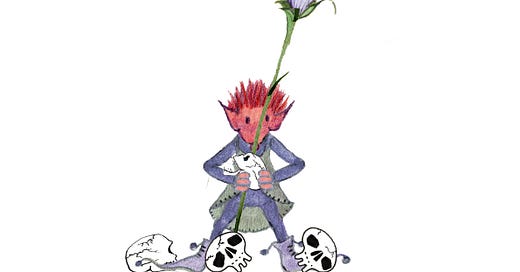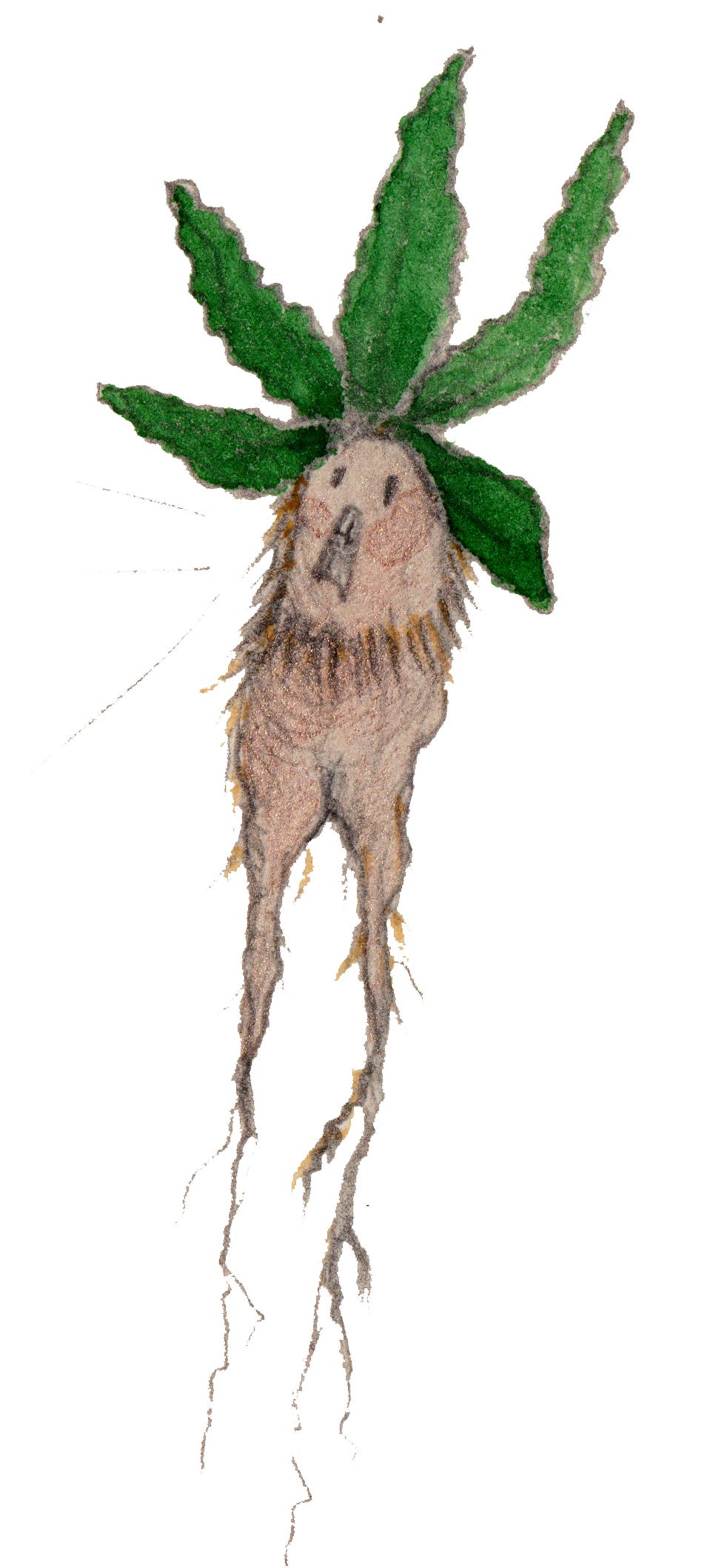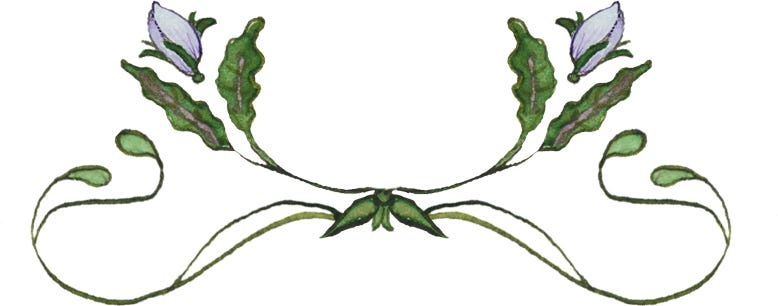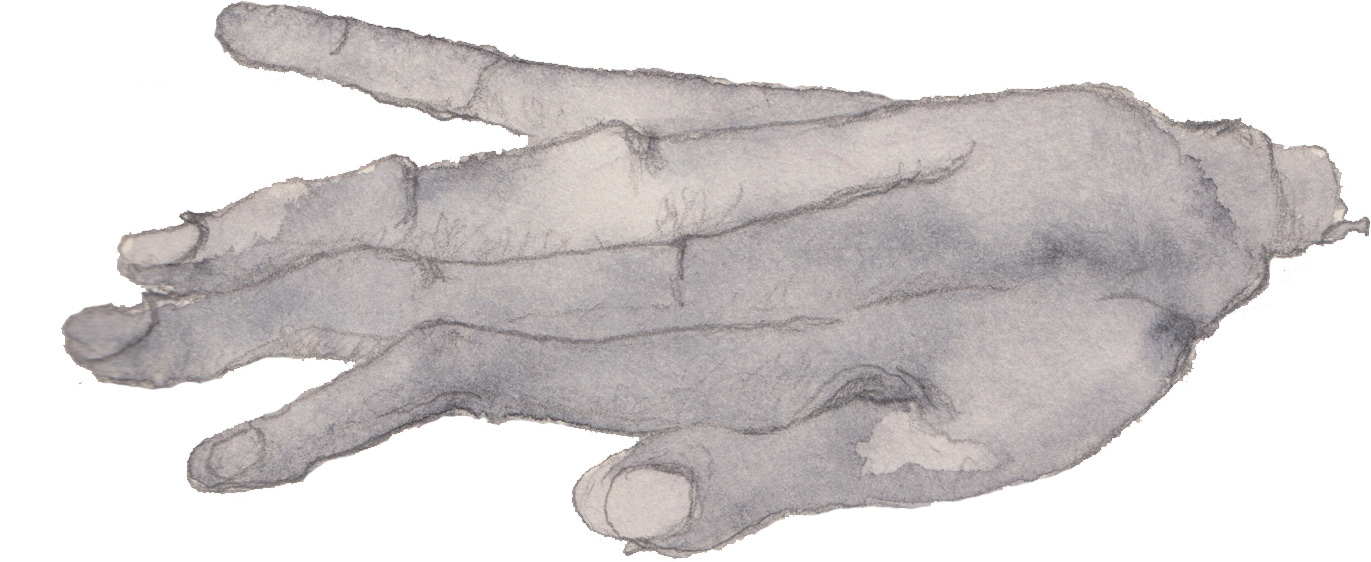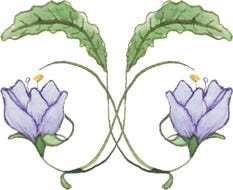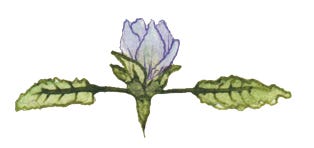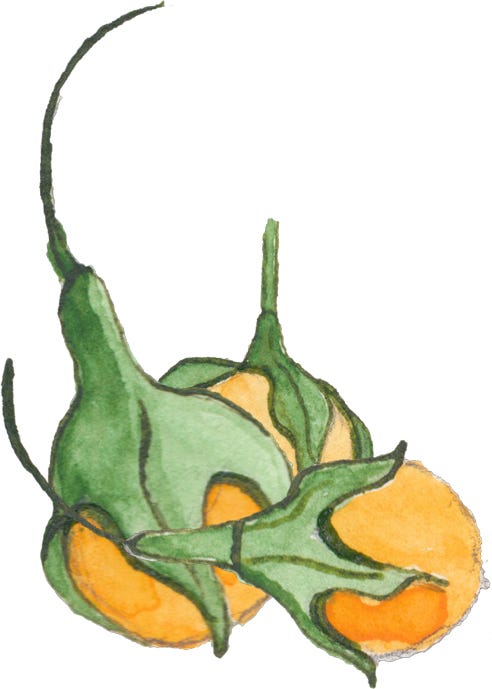The Middle English word Mandrake was a combination of the word drake which meant dragon and the word manne, which meant man. Back then, drake was often used for dangerous things with magical powers. And Mandrake is dangerous; every single part of it is deadly poisonous!
The ‘man’ part of Mandrake, refers to its hairy, two-legged root. It looks a little like a man and was said to shriek most horrifically when pulled from the earth.
The shrieks were so terrifying, you’d drop dead on hearing them. This was rather unfortunate as the root was highly desired by witches for protection, good fortune, and love spells. It was said it could even tell the future if you listened carefully enough.
Others think that the word Mandragora, comes from French main de gloire, meaning hand of glory. This is the dried and pickled hand of a hanged murderer and has magical powers. Anyone you show it to, will be unable to move. On top of that, Mandrake was rumoured to grow underneath the gallows of murderers.
You can see a real hand of glory in the Whitby museum, in Whitby, Yorkshire, UK. It was originally found in the walls of an old thatched cottage and donated to the museum in 1935. Let’s hope its powers have reduced over the centuries or we’d all be frozen to the museum floor!
Some think that the scientific name Mandragora comes from two Sanskrit (a 4,000-year-old-language) words: Mandros for ‘sleep’, and Agora for substance. A substance that makes you sleep. Careful though, too much Mandragora and you’ll sleep forever.
Over 3,000 years ago, the Assyrians used Mandrake to sedate patients during operations. They wrote their recipes in cuneiform (ancient writing on clay tablets). The Ancient Arabs translated these and used them to create their own anaesthetic by mixing Mandrake with Opium, which comes from Poppies. They called this Spongia Somnifera, and surgeons the world over, used it to anaesthetise patients until ether was invented in 1846.
The word Mandrake was first recorded in writing in the 14th century. Other names for Mandrake are Devil’s Candles and Satan’s Apple, referring to the poisonous yellow seed pods that look a bit like apples.
Trick or Treat?
This newsletter is NOT a field guide for flower identification. It’s often difficult to tell the difference between harmless plants and poisonous plants and some flowers are rare and protected by law, so, NEVER pick or use any plants or flowers if you’re not sure about them.
illustrations ©Chantal Bourgonje


